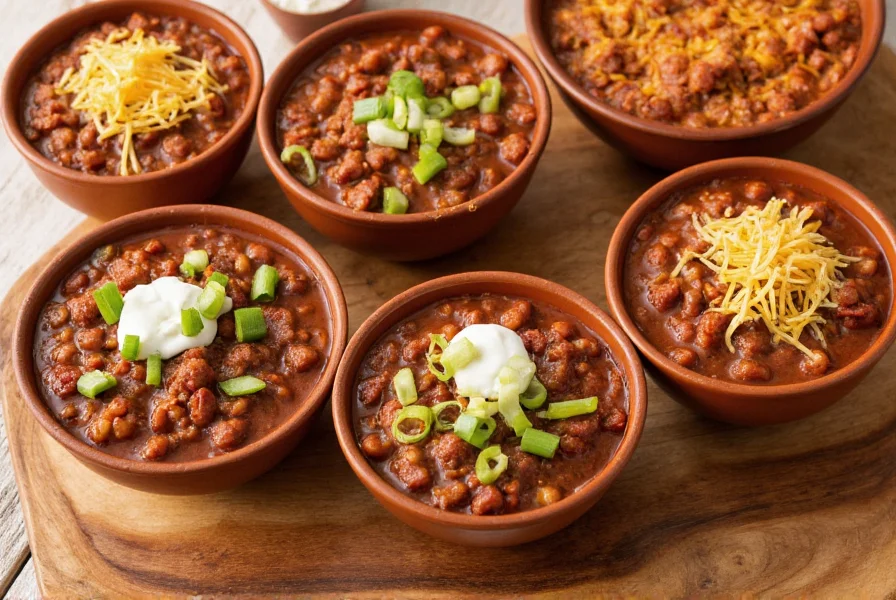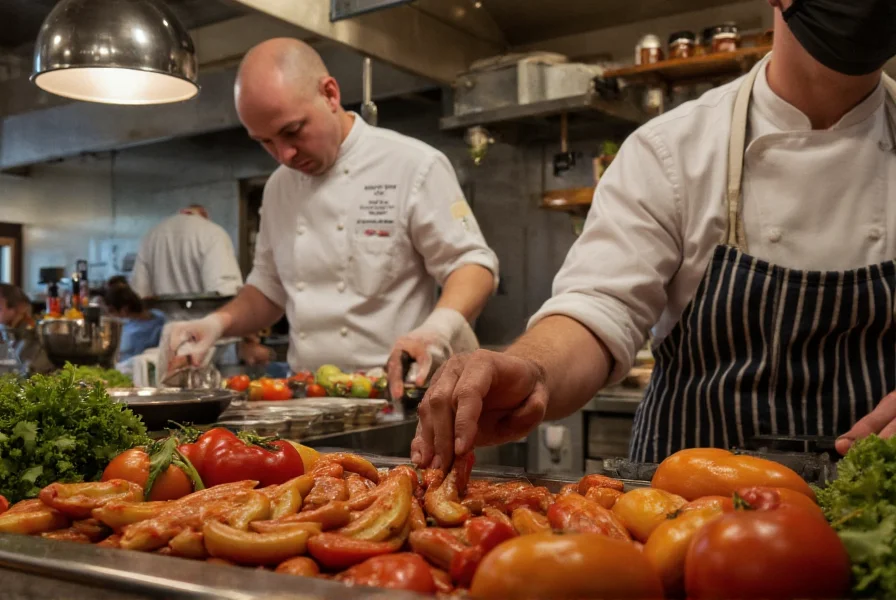Chili has become a staple lunch option across American restaurants, particularly during cooler months and at establishments specializing in Southwestern or comfort food cuisine. Understanding what to expect on a chili menu helps diners make informed choices whether they're seeking a quick workday meal or a satisfying weekend lunch.
Understanding Standard Chili Menu Categories
Most lunch-focused chili menus organize their offerings into clear categories that help customers quickly identify options matching their preferences. The standard structure typically includes:
| Menu Category | Common Offerings | Lunch Portion Size | Typical Price Range |
|---|---|---|---|
| Classic Beef Chili | Regular, Texas-style, Cincinnati-style | 8-10 oz bowl | $8.50-$12.00 |
| Specialty Chilies | White chicken, turkey, pork green chili | 8-10 oz bowl | $9.50-$13.50 |
| Vegetarian Options | Three-bean, black bean, vegetable chili | 8-10 oz bowl | $8.00-$11.50 |
| Lunch Combos | Chili + side + drink | Full meal | $10.99-$14.99 |
Regional Variations in Chili Lunch Menus
Chili menu lunch options vary significantly by region, reflecting local culinary traditions and preferences. Knowing these regional differences helps diners understand what to expect when traveling or exploring diverse eateries.
In Texas, lunch chili menus typically feature meat-heavy options with minimal beans, often labeled as "正宗 Texas chili." These establishments frequently offer chili by the bowl or as a topping for hot dogs (chili dogs), with portions designed for quick midday meals.
Cincinnati chili restaurants present a distinct Mediterranean-influenced option, usually served as a "three-way," "four-way," or "five-way" over spaghetti with optional toppings like cheese, onions, and beans. Lunch portions are typically smaller than dinner servings but maintain the signature flavor profile.
Southwestern restaurants commonly feature green chili options made with tomatillos and green chilies, particularly popular in New Mexico and Colorado. These establishments often include lunch specials that pair green chili with tortilla chips or as a side to salads.
Dietary Adaptations on Modern Chili Menus
Contemporary chili menu lunch selections increasingly accommodate various dietary needs without compromising flavor. Most restaurants now clearly label options for common dietary restrictions:
- Gluten-free chili options - Many establishments offer naturally gluten-free chili bases, with cornbread served on the side for those who can tolerate gluten
- Vegan chili lunch specials - Featuring plant-based proteins and vegetable broth bases, often available with avocado or cashew cream toppings
- Low-sodium chili selections - Prepared with reduced salt content for health-conscious diners
- Spice-level indicators - Most menus now include heat level guides from mild to extra hot
When examining a chili menu for lunch, look for icons or footnotes that indicate these adaptations. Many restaurants now provide detailed ingredient lists upon request, particularly helpful for those with specific food allergies or dietary requirements.

Complementary Sides and Beverages
A complete chili menu lunch experience extends beyond the main dish. Thoughtful pairings enhance the meal and provide balanced nutrition for the midday meal.
Traditional sides accompanying chili at lunch include:
- Cornbread (often served in small, single-serving portions for lunch)
- Saltine crackers or oyster crackers
- Rice (particularly with white chicken chili)
- Simple green salad
- Tortilla chips with salsa
Beverage pairings that complement chili lunch specials typically feature:
- Iced tea (sweet or unsweetened)
- Local craft beer (in establishments serving alcohol)
- Sparkling water with lime
- Mexican Coke or other regional sodas
- Cold-brew coffee (surprisingly popular with spicier chilies)
How to Navigate Chili Menu Options Effectively
When faced with a diverse chili menu for lunch, consider these practical strategies to select the perfect option:
- Identify your heat tolerance - Check for spice indicators and don't hesitate to ask staff about heat levels
- Consider your afternoon schedule - Spicy options might not suit meetings requiring clear speech
- Look for lunch specials - Many restaurants offer value bundles during midday hours
- Ask about customization - Most places accommodate requests to add or remove ingredients
- Check portion sizes - Lunch portions are typically smaller than dinner servings
Understanding menu terminology helps make informed choices. Terms like "loaded," "smothered," or "supreme" typically indicate additional toppings, while "bowl" versus "cup" refers to portion size. "From scratch" suggests house-made rather than pre-packaged chili, often indicating better quality for your chili menu lunch selection.

Seasonal Variations in Chili Menus
Many restaurants adjust their chili menu lunch offerings based on the season. During summer months, lighter options like white chicken chili or vegetarian black bean chili become more prominent, while heartier beef chilies dominate fall and winter menus.
Some establishments feature limited-time offerings that incorporate seasonal ingredients:
- Fall: Pumpkin chili or chili with roasted autumn vegetables
- Winter: Hearty beef and bean chili with warming spices
- Spring: Lighter turkey chili with fresh herbs
- Summer: Vegetarian chili with fresh garden vegetables
These seasonal variations provide variety for regular customers while introducing new diners to creative takes on traditional chili menu lunch options.










 浙公网安备
33010002000092号
浙公网安备
33010002000092号 浙B2-20120091-4
浙B2-20120091-4